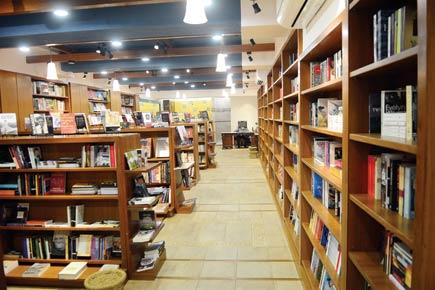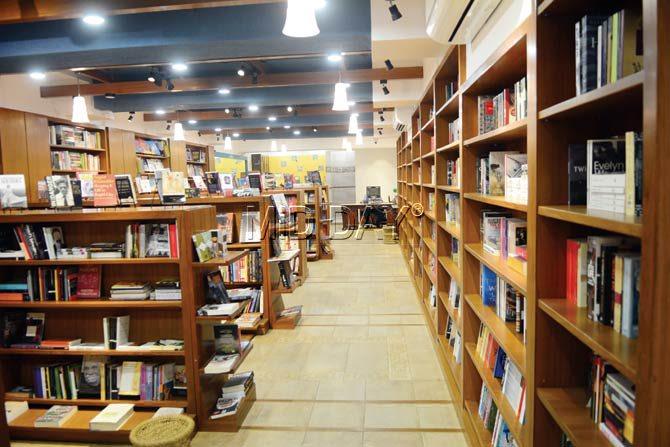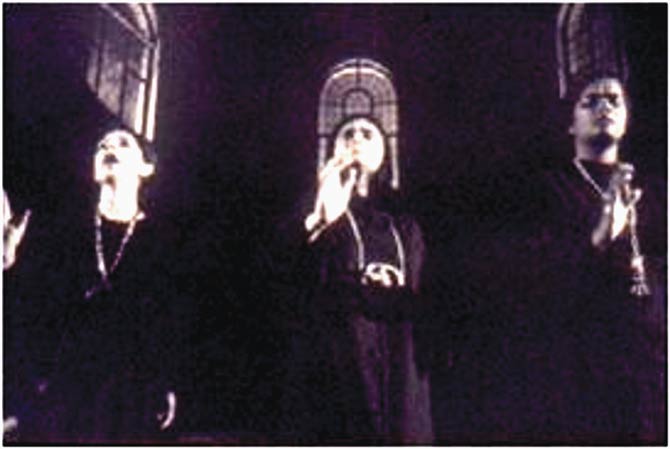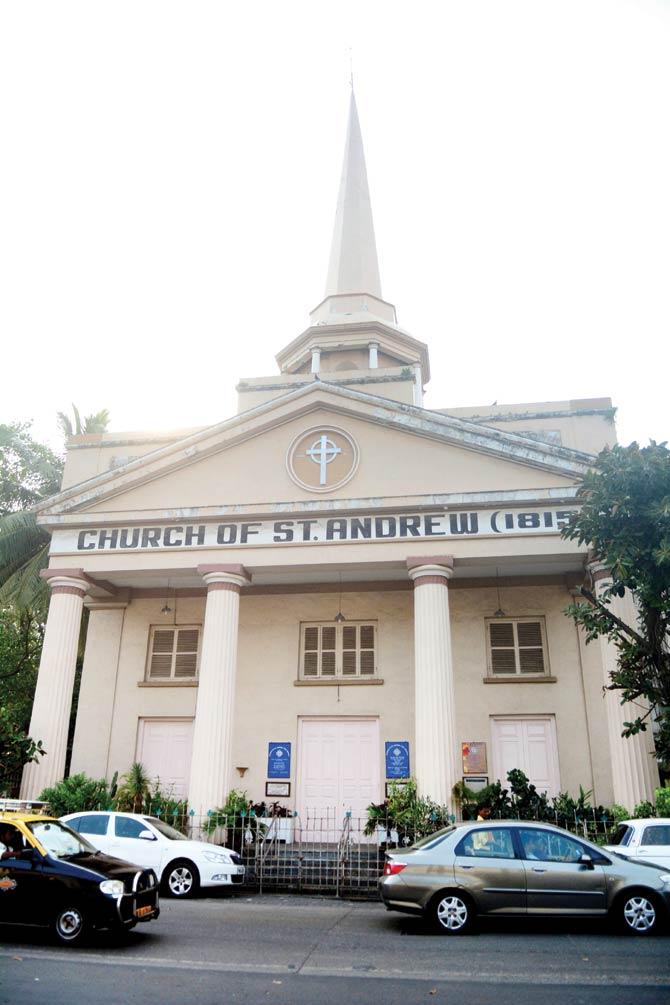If it feels like London it must be Ballard Estate, it’s been said of our oldest business district

 If it feels like London it must be Ballard Estate, it’s been said of our oldest business district.
If it feels like London it must be Ballard Estate, it’s been said of our oldest business district.
ADVERTISEMENT
For long on my wish-list of addresses I’ve hoped to work at (my first 15 years in journalism were well divided between the fine lines of the Times of India offices and The Army & Navy Building), this one has heritage writ large on its every stone European Renaissance facade.

Wayword & Wise bookstore opens at Ballard Estate today. Pic/Sameer Markande
With an upswing of pier activity north of the Town Hall, the Bombay Port Trust (BPT) reclaimed 22 acres of land, filling them with material excavated from the adjacent Alexandra Docks. Then, 1908 to 1914 saw George Wittet lay out the city’s first consciously planned commercial hub using an elegant uniformity of design in the Edwardian neoclassical architectural style. The prime precinct that rose as a major symbol of mercantile power was named for Colonel JA Ballard, a founder of the BPT.

Sabira Merchant, Usha Katrak and Savita Mukherjee in The Serpent, 1970, staged inside the Church of St Andrew. Pic courtesy/Ace Productions

Graced by the august offices of shipping companies and flagship industry houses, the area welcomes a new kid on the neighbouring block today. A brave little bookshop in an age of online ordering and Kindle downloads. Wayword & Wise on Mint Road is investment banker and gourmet foods importer Atul Sud’s labour of love. “I like people who like books,” he shares with simple conviction. “It’s a life-changing decision. Madness to open an independent bookshop today, but passion should take precedence over commercial gain. I have faith there are enough fans of print who want to smell and touch books, feel them in their hands.” As his Customer Number 4, on buying a Wodehouse boxed set for a fellow PG fan, I can’t miss the bookmark quoting Neil Gaiman: ‘A book is a dream that you hold in your hand.’
Carefully curated by Virat Chandhok, almost 8,000 dreams wait to unfold on cosily crafted display shelves. Where else will you find rare titles in a genre as neglected as literary criticism, anthologies of edgy poetry from Lorca to Ted Hughes, a vast range of illustrated Rumi texts, lesser known Scandinavian writers, offbeat Japanese and Chinese modern masters of crime fiction?
The children’s section with enhanced Harry Potter editions and Shel Silverstein’s sparkling verse tomes could convert even reluctant young readers into becoming bookworms. Music buffs may look forward to dedicated delights like The John Lennon Letters and The Kurt Cobain Journals. Beyond usual sci-fi suspects Asimov and Arthur C Clarke, you’ll get acquainted with the visionary dystopian worlds of JG Ballard and Philip K Dick. There are equally amazing arrays of select books covering cookery, travel, theatre, art, film and photography. Sud acknowledges KD Singh, gentle proprietor of The Book Shop in Delhi, as his inspiration and mentor.
Walk out from W & W and the mind flies back to The Book Point on Kamani Marg, mere metres away. A happy hangout that seemed to expansively say, as you entered, that books deserved every inch of its capacious racks. Trace a path through Mint Road and Bread Market Lane (bakeries and wine shops dotting this spot, popularly called Fort Market, served Navy customers), onward till Green Road. Parallel road signs announce Mangalore Street, Karwar Street and Cochin Street — because boats and country craft sailed in from those coasts before the Ballard reclamation. I stroll past structures standing bulwark-like, beautiful, built to delight the eye. The Dharamsi Ratansi Mulji Memorial fountain speaks of a family’s loss. It was commissioned by a Bhatia freight broker mourning the death of his son. The figure of a boy with a book, sculpted by JJ School of Art principal John Griffiths, crowns the fountain whose intricate contours were crafted by FW Stevens.
Every surrounding edifice, the Mint with Ionic-columned portico, the Red Cross Society, the Reserve Bank, insurance agency headquarters, reflects Bombayphile Sharada Dwivedi’s description of Ballard Estate — a space with a humane urbanistic quality. I make a morning of it, revisiting favourite relics down the stretch leading to the historic hub around Lion Gate. From gazing up at the Dockyard Clock Tower to the maritime mural sprawled on the wall outside the Elephant Gate, this is where it’s all at.
There’s a thrill being assigned an article on a site obscured for half a century but finally unveiled as a showpiece. In 2005, when the Indian Navy restored Ballard Bunder Gatehouse for the public as a museum, I wrote about it for a city magazine. Coming up in 1920 to mark the realignment of the harbour, the gatehouse was located where the small Ballard Pier was, with an approach jetty at right angles. It became part of the Naval Dockyard after Independence, falling into disuse, hidden from view for half a century. Transformed with scale models of ships, trawlers and dhows, the maritime museum includes six-feet-tall anchors, knee-high lights once atop a lighthouse, ancient maps and photographs of Bombay settlers as diverse as goldsmiths, policemen, fisher folk and mill workers.
At the junction near Café Britannia of berry pulao fame and Old Customs House, the World War I Memorial pays tribute to BPT employees claimed by battle. The weather is too hot to enjoy the idyllic Horniman Circle Gardens, originally designed in 1862 by architect Rienzi Walton and named in memory of BG Horniman who remarkably fought for Indian freedom and adored the city for which he edited the Bombay Chronicle. Instead, I stop to stare opposite at the haunt that fascinates hundreds of filmmakers to shoot their own reels, a la the Odessa sequence — the grand steps heading up to the Asiatic Library. A moment I cherish is of sitting on these to hear the Symphony Orchestra of India most movingly render strains of the bhajan Raghupati Raghav Rajaram on a balmy Kala Ghoda Fest evening.
Across the street, the KR Cama Institute readies to celebrate its centenary; it was created in 1916 to promote the study of the cultures of the East. But I’m more drawn to the Church of St Andrew next door, built to resemble St Martin in the Fields, of London. Short storyteller extraordinaire and my college professor, Nisha da Cunha reminds us it was the unusual venue of Pearl Padamsee’s debut play, The Serpent, in 1970. Managing to get permission from the pastor of this Scots Kirk, the dynamo director dramatically placed silver foil over the full floor of the church for the show.
Inside this 200-year-old church, erected after the arrival of Bombay’s first Presbyterian minister, lies a 163-year-old baby pipe organ. The vintage instrument is still played soulfully by teenaged parishioners. The more things change the more they remain the same.
Write in to Meher at mehermarfatia@gmail.com
 Subscribe today by clicking the link and stay updated with the latest news!" Click here!
Subscribe today by clicking the link and stay updated with the latest news!" Click here!







